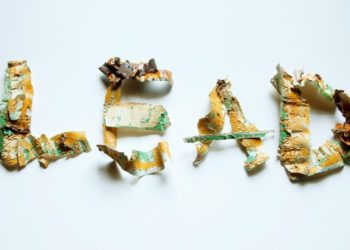Delivering a single shot of gene therapy at birth could offer children protection against HIV for years.
A study from the Tulane National Primate Research Center and California National Primate Research Center has identified the first weeks of life—when the immune system is more tolerant—may be the optimal and only window for delivering such gene therapy effectively.
“Nearly 300 children are infected with HIV each day,” study author and Tulane microbiology professor Amir Ardeshir said in a statement. “This approach could help protect newborns in high-risk areas during the most vulnerable period of their lives.”
HIV is primarily transmitted to children from the mother breastfeeding after birth. Antiretroviral treatments have shown success in suppressing the virus and limiting transmission (and where the right treatment is available, you can live a normal life with HIV and have an undetectable viral load).
However, adherence and accessibility to doctors both decline after childbirth, particularly in areas with more limited health care.
“This is a one-and-done treatment that fits the critical time when these mothers with HIV in resource-limited areas are most likely to see a doctor,” Ardeshir said.
“As long as the treatment is delivered close to birth, the baby’s immune system will accept it and believe it’s part of itself.”
In the study, non-human primates received gene therapy that programs cells to continuously produce HIV-fighting antibodies. Timing this right in early life—within the first month—proved critical to the one-time treatment offering long-term protection.
“In infants, a single shot at birth kept protective antibody levels high for the entire three-plus years of the study, with no booster required,” Ardeshir told Newsweek. “Based on this, we expect protection in people could cover several years as well.
“If antibody levels eventually dip, a quick ‘top‑up’ could be done using a different version of the delivery system to avoid the body’s immunity to the first shot, including later in adulthood.”
However, those in the study treated at 8–12 weeks showed a more developed and less tolerant immune system that didn’t accept the treatment as effectively.
To deliver the treatment, researchers used an adeno-associated virus (AAV), a harmless virus that can help to deliver genetic code to cells. The virus was sent to muscle cells with a long lifespan and delivered instructions to produce broadly neutralizing antibodies (bNAbs), which are capable of neutralizing multiple strains of HIV.
Previous studies found bNAbs to be effective at fighting HIV, but they required repeated infusions, which are costly and come with logistical challenges in low-resource settings.
Instead, the researchers turned these muscle cells into “micro factories” to just keep producing the antibodies.
Newborns were found to show greater tolerance and expressed high levels of bNAbs, which successfully prevented infection during simulated breastfeeding and later exposures mimicking sexual transmission.
Older infants and juveniles were more likely to have produced anti-drug antibodies that shut down the treatment. Researchers also found that exposing fetuses to the antibodies before birth helped older infants accept the gene therapy later, avoiding the immune rejection that often occurs with age.
The researchers believe this type of one-time injection at birth could offer a more cost-effective and feasible real-world solution, while putting less burden on the mother for a follow-up visit.
“Although originally designed for babies born to mothers living with HIV, the platform can protect any newborn at substantial risk, including infants whose maternal status is unknown or whose mothers acquire HIV during breastfeeding,” Ardeshir said.
“In high-prevalence regions, a universal newborn dose could be the most practical public-health approach.”
Of course, further research will need to consider how the results could translate to human infants and children, who may be less susceptible to AAV-delivered treatments. The study also used one strain of simian-human immunodeficiency virus, which doesn’t reflect the variety of HIV strains.
However, if successful, it’s thought the treatment could dramatically reduce mother-to-child HIV transmission rates in high-risk regions like sub-Saharan Africa, where 90 percent of pediatric HIV cases can be found.
“Safety testing and clinical‑grade manufacturing are underway. A first-in-human Phase 1/2 safety trial is being planned and could begin within the next few years. If results look good and regulators agree, we could expand from there,” Ardeshir explained.
“Importantly, the intramuscular [within the muscle] dose we’re using is far lower than the systemic doses now being scrutinized for safety, because we are working with rather than against, the newborn immune system.”
It may also be possible to adapt the therapy to protect against other infectious diseases like malaria, which disproportionately affects young children in low-income countries.
“Nothing like this was possible to achieve even 10 years ago,” Ardeshir said. “This was a huge result, and now we have all the ingredients to take on HIV.”
Do you have a tip on a health story that Newsweek should be covering? Do you have a question about HIV? Let us know via [email protected].
Reference
Ardeshir, A., O’Hagan, D., Mehta, I., Shandilya, S., Hopkins, L. L. J., Adamson, L., Kuroda, M. J., Hahn, P. A., da Costa, L. A. B., Fuchs, S. P., Martinez-Navio, J. M., Gardner, M. R., Van Rompay, K. K. A., Magnani, D. M., Lifson, J. D., Gao, G., Farzan, M., Desrosiers, R. C., Das, J., & Martins, M. A. (2025). Determinants of successful AAV-vectored delivery of HIV-1 bNAbs in early life. Nature. https://doi.org/10.1038/s41586-025-09330-2
The post Single Shot Would Protect Children From HIV for Years appeared first on Newsweek.




